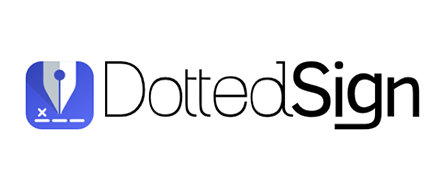Understanding the Key Differences: Contract Addendum vs. Amendment
In the realm of legal agreements, understanding the nuances between a contract addendum and a contract amendment is crucial. These terms often appear in discussions about modifying existing contracts, but they serve different purposes and impact the original contract in unique ways.
This article delves into the key differences between these two important legal tools, exploring their definitions, purposes, and the implications they have on the contracts they modify.
For instance, according to Prado et al. (2024), addendums are frequently used in public service contracts to accommodate deadline extensions and budget increases, demonstrating their critical role in contract flexibility (Prado et al., 2024).
For anyone involved in drafting, negotiating, or managing contracts, distinguishing between an addendum and an amendment is essential to ensuring that all parties involved are clear on the terms and conditions of their agreements.
Table of Contents
What is a Contract Addendum and How Does it Work?
How does an addendum differ from the original contract?
An addendum to a contract is a document that adds new terms or conditions to an existing contract without altering the original agreement’s core aspects.
Unlike an amendment, which modifies existing terms, an addendum supplements the original contract by introducing additional information or clauses. When an addendum is attached to the original contract, it becomes a legally binding part of the agreement.
This ensures that any new terms are enforceable and that the contract’s integrity is maintained.
In public procurement, research shows that nearly 100% of analyzed contracts included addendums for extending deadlines and increasing costs, reflecting the frequent necessity of such modifications in complex agreements (Prado et al., 2024).
The addendum can be used to add crucial specifics to agreements, such as payment conditions or deadlines.
The addendum can be used in various situations, such as adding specific details in a real estate transaction or clarifying points that were not explicitly outlined in the initial agreement.
For example, when handling a lease, you might attach an addendum to specify updated terms—alternatively, you can choose from over 51 simple lease agreement templates to expedite the process.
Simplify your contract signing addendum process today with DottedSign—start your free trial now and see how easy eSigning a contract can be.
When should you use an addendum?
The decision to use an addendum often depends on the nature of the changes required in the contract.
An addendum is suitable when new terms need to be added without altering the existing contract’s framework. For instance, in a real estate contract, an addendum might specify additional property features or stipulate a new closing date.
It is particularly useful in cases where the original contract is signed and the parties involved wish to expand the agreement without renegotiating the core terms.
The addendum allows for flexibility and detailed customization while maintaining the original contract’s structure.
Additionally, certain legal documents, such as an affidavit, may accompany an addendum to verify facts or declarations made within the contract. While not always required, affidavits can strengthen the legal enforceability of contract modifications in some jurisdictions.
What are the legal implications of a contract addendum?
Legally, an addendum is considered part of the original contract once all parties involved in the contract agree to its terms.
It is important to ensure that the addendum is drafted clearly and concisely to prevent any misunderstandings.
As highlighted in Fargas (2024), poorly drafted contract modifications, including addendums, can lead to serious non-conformity issues, particularly when the scope of obligations becomes ambiguous (Fargas, 2024).
The addendum must be signed by all parties to become enforceable, and it should reference the original contract to establish its connection.
Failure to properly integrate an addendum can lead to disputes and challenges in enforcement, hence the need for precision and clarity in its preparation.
Exploring the Purpose of a Contract Amendment

How does a contract amendment modify existing terms?
A contract amendment is a formal modification that alters specific provisions of an existing contract.
Unlike an addendum, which adds new information, an amendment changes the original contract’s terms and conditions. This might involve revising payment schedules, extending deadlines, or changing the scope of work outlined in the contract.
The amendment process requires mutual consent from all parties involved, as it revises the original agreement’s terms.
For example, as Hnatiuk (2024) notes, amendments to energy supply contracts often reflect critical updates to pricing terms or supply conditions, underscoring the amendment’s role in adapting contracts to changing circumstances (Hnatiuk, 2024).
The amendment is crucial for maintaining the contract’s relevance and ensuring that it accurately reflects the parties’ intentions.
Using intuitive tools like DottedSign makes signing and managing amendments straightforward—helping you maintain accuracy while saving valuable time.
What is the process for implementing a contract amendment?
Implementing a contract amendment involves several critical steps to ensure that the changes are legally binding.
First, the parties involved must negotiate the new terms and reach a consensus. Once agreed upon, the amendment must be documented in writing and signed by all parties associated with the original contract.
This formal agreement reinforces the amendment’s legal standing.
It is essential to ensure that the amendment references the original contract clearly, specifying the sections being modified to avoid ambiguity and potential disputes.
Why is a contract amendment considered a formal modification?
The formal nature of a contract amendment is emphasized by its ability to alter the fundamental terms of an agreement.
Unlike informal agreements or verbal modifications, a contract amendment requires documentation and signatures to be enforceable.
This formal approach ensures that all parties fully understand the changes and agree to the revised terms.
The amendment depends on precise language and clear documentation to prevent any future disagreements regarding the contract’s interpretation and execution.
What are the Key Differences Between Addendums and Amendments?
What are the differences between addendums and amendments?
The primary difference between an addendum and an amendment lies in their function within a contract.
An addendum is used to introduce new information or clauses that were not part of the original contract, while an amendment modifies existing terms.
Additionally, an addendum can be seen as an appendix to the original contract, providing supplementary details without changing the contract’s core terms.
In contrast, an amendment alters the original agreement’s provisions, requiring careful negotiation and documentation to ensure mutual consent and legal enforceability.
How do addenda and amendments affect the original agreement?
Contract modifications—whether through contract addendums and amendments—can significantly impact the enforceability, scope, and clarity of an agreement. These changes to an existing contract often arise when parties need to modify certain specific terms, either by introducing new elements or revising existing provisions.
Both tools ensure that a contract or agreement remains accurate and reflective of the evolving needs and intentions of all parties. Once executed, these changes become legally binding components of the original agreement, and are considered part of the contract, provided all parties in writing.
While either an addendum or an amendment serves distinct purposes, both are essential for maintaining contractual relevance, ensuring compliance, and preventing disputes. The key lies in understanding the difference between them, particularly in maintaining the integrity of legal agreements.

(Real Use Cases) When should you choose an addendum over an amendment?
The choice of an addendum or an amendment depends on the nature of the change and its effect on the terms of the agreement.
Below are real-world examples to clarify the differences between contract addendums and amendments.
Real Estate Lease Agreements
- Addendum Example: Adding a pet policy to an existing lease that originally didn’t mention pets. The addendum adds new terms to the lease, introducing an additional clause without altering the existing terms, such as rent amount or lease duration.
- Amendment Example: Changing the lease term, such as extending a 12-month lease to 18 months. This amendment may directly revise a core provision outlined in the original contract, such as the agreed-upon closing date or occupancy timeline.
Software License Agreements
- Addendum Example: Adding technical support services or access to premium features not included in the original contractual agreement. Here, the addendum adds new services that expand the agreement’s scope.
- Amendment Example: Modifying the pricing structure, such as increasing the subscription fee or changing the payment frequency. This amendment is typically used when adjusting purchase price terms, requiring an update to the provisions within the original agreement.
Construction Contracts
- Addendum Example: Adding new deliverables or specifications, like including additional landscaping work. The addendum pertains to new information or provisions that were not part of the existing contractual agreement, but it does not alter previously agreed timelines or budgets.
- Amendment Example: Adjusting the project completion deadline due to unforeseen delays. In this case, the amendment to extend the project timeline modifies an aspect of the contract originally agreed upon.
Service Agreements (Consulting, Marketing, etc.)
- Addendum Example: Including a new service package, such as social media management, as an add-on to an existing digital marketing agreement.
- Amendment Example: Revising the payment milestones or altering the scope of deliverables, reflecting new timelines or updated client needs.
No matter the industry, these contract changes require clear documentation, mutual agreement, and formal signing to be enforceable and legally binding.
Pro Tip: Integrate digital workflows to manage your cloud-based contract processes. DottedSign streamlines approvals and ensures secure eSignatures for all your contract addendums and amendments.
Whether you are adjusting purchase price, adding new deliverables, or modifying timelines, DottedSign provides a clear audit trail, maintaining transparency in all changes to an existing contract.
Simplify contract changes today—start your free trial with DottedSign and experience seamless, secure signing workflows for all your amendments and addenda.
How Do Amendments and Addendums Impact the Parties Involved?
Contract changes—whether through amendments or addenda—redefine each party’s obligations, rights, and responsibilities. They require clear documentation and mutual consent to ensure enforceability.}
These changes {may impact timelines, financial terms, or the scope of work, requiring parties to realign their obligations and expectations.
Situmorang (2021) highlights that the pacta sunt servanda principle demands strict adherence to contract terms, emphasizing that any modifications through amendments or addendums directly alter binding obligations between parties (Situmorang, 2021).
Incorporating eSignature solutions, like DottedSign, into your contract signing workflows streamlines approval processes, improves communication, and ensures that all updates are executed promptly and compliantly.
This helps maintain legal enforceability while reducing administrative burdens and delays.
What roles do parties involved in the contract play in each modification process?
The parties involved in the contract play crucial roles in both amendments and addendums.
For an addendum, the parties must agree to the new terms being added, ensuring that the additional clauses are clear and mutually acceptable.
In the case of an amendment, the parties must negotiate the changes to the existing terms, requiring a consensus to modify the agreement.
Both processes necessitate active participation and agreement from all parties to ensure that the modifications are legally binding and reflect their intentions.

How do amendments and addendums alter the parties’ obligations?
Amendments and addendums can significantly alter the parties’ obligations under a contract.
An addendum may introduce new responsibilities or conditions that the parties must fulfill, while an amendment can change the terms of existing obligations.
These modifications can impact timelines, payment structures, or the scope of work, requiring the parties to adjust their actions and expectations accordingly.
Clear communication and precise documentation are essential to ensure that all parties understand and accept their revised obligations.
What are the repercussions of not agreeing to changes?
Failure to agree to changes proposed through an addendum or amendment can lead to significant repercussions.
If the parties cannot reach a consensus, the original contract remains in effect without the desired modifications.
This can create challenges if the existing terms no longer align with the parties’ needs or intentions.
In some instances, unresolved disagreements could escalate into formal disputes or legal action, increasing the risk of contract termination or penalties.
To minimize these risks, parties should establish clear communication protocols and a structured negotiation process before proposing any contractual modifications.
Utilizing Contract Management Software for Amendments and Addendums
How can contract management software streamline modifications?
Contract management software can significantly streamline the process of implementing amendments and addendums by providing centralized, organized platforms for managing all aspects of contract modifications.
Prastyanti and Tengpongsthorn (2023) emphasize that AI-driven contract automation tools are revolutionizing the way agreements are formed and modified (Prastyanti & Tengpongsthorn, 2023).
These tools offer features that facilitate the drafting, negotiation, and approval of changes, ensuring that all modifications are documented accurately and efficiently.
By automating many of the administrative tasks associated with contract management, software solutions can reduce the risk of errors and enhance communication among the parties involved.
How does software ensure compliance with legal requirements?
Contract management software ensures compliance with legal requirements by providing tools for documenting and tracking all contract modifications.
These platforms often include templates and checklists that guide users through the amendment and addendum processes, ensuring that all necessary steps are followed.
Additionally, the software can store all relevant documents and correspondence, creating a comprehensive audit trail that demonstrates compliance with legal standards.
By centralizing contract management and leveraging technology, organizations can enhance their ability to meet legal obligations and maintain the integrity of their agreements.
What are the benefits of using software for managing amendments?
eSignature software and document management platforms like DottedSign offer significant advantages when handling amendments and addenda.
These tools enable organizations to streamline their signing workflows by automating document preparation, tracking approvals, and ensuring compliance with legal requirements. Features like real-time notifications, version control, and secure eSignatures ensure that no critical steps are missed during contract modifications.
By integrating digital signing into your contract management processes, you can accelerate approvals, reduce errors, and maintain a comprehensive audit trail for future reference.
As Schwartz and Scott (2003) argue, modern contract theory calls for fewer default rules and clearer frameworks that respect parties’ autonomy, supporting the move toward simplified and efficient contract modification processes through addendums and amendments (Schwartz & Scott, 2003).
Plus, explore our detailed guide on the 6 essential elements of a contract to ensure your agreements meet all legal requirements from the start.
Ready to experience seamless contract eSigning and document workflow management? Start your free trial today with DottedSign and simplify every step of your contract amendment process.


